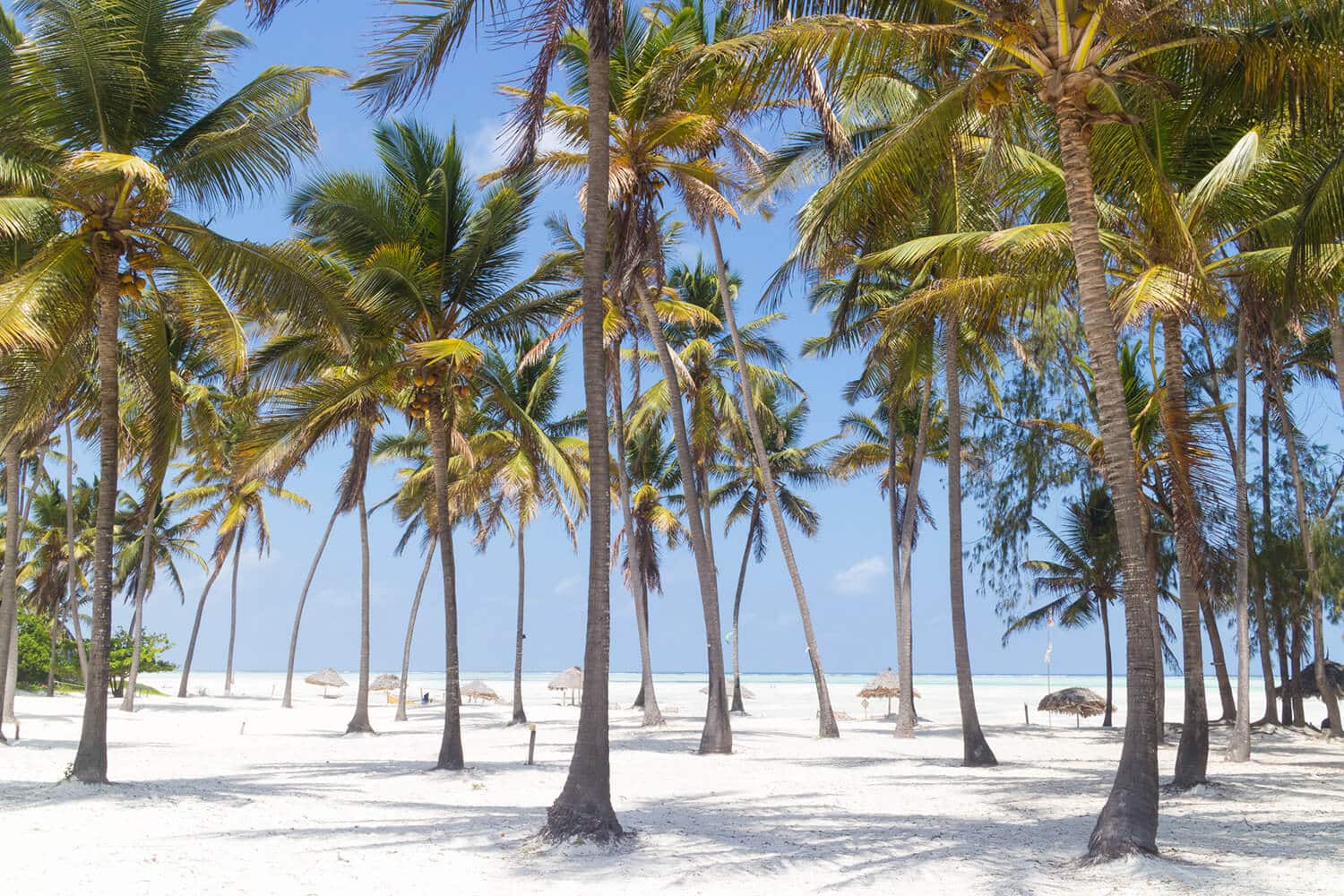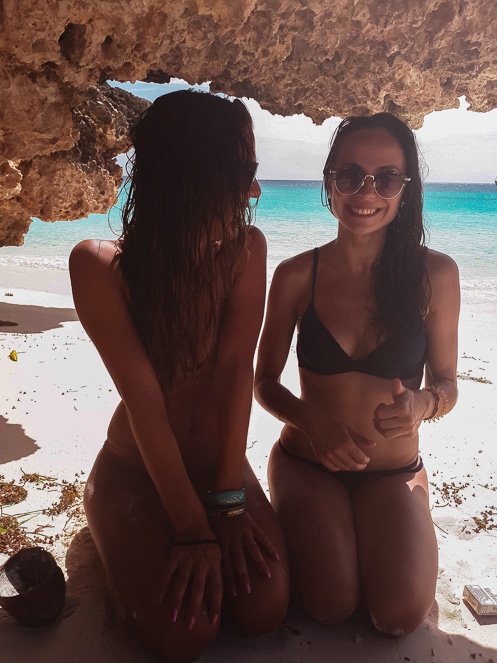A guide Zanzibar's underwater world
Duration: at least ten days
Where to Stay: Sunshine Marine Lodge or Sunshine Azure
It only took one backwards roll off a wooden dhow in Matemwe for me to fall—quite literally—head over fins for Zanzibar’s reefs. I’d signed up with Dive Point Zanzibar to earn my PADI Open Water certificate, expecting a pleasant crash-course in buoyancy control. Instead, I found myself in a living kaleidoscope: hawksbill turtles cruising past pastel-pink soft coral, reef sharks ghosting in and out of the blue, and sunlight cutting through thirty metres of gin-clear Indian-Ocean water. I left Matemwe with salt-bleached hair and an obsession to explore every corner of the archipelago’s underwater world—starting right here.
- Macro 80%
- Clear view 100%
- Corals 80%
- Big Fish 10%
Why Zanzibar Belongs on Every Diver’s Bucket List
Geography that keeps giving. Unguja (Zanzibar Island), Pemba, and Mafia perch along the East-African continental shelf. Deep channels funnel nutrients toward fringing reefs, dramatic walls, and bommies teeming with life.
Bathtub temperatures & postcard visibility. Water sits between 26 °C and 29 °C year-round, and visibility often stretches twenty to thirty metres—even in the rainy months.
Beyond the bubbles. Non-divers can lose themselves in Stone Town’s spice-scented alleyways, kite-surf in Paje, or sip sundowners aboard a dhow. Nobody feels like a tag-along.
Diving in the North & East
Nungwi & Kendwa (North Unguja)
If you crave both pelagics and lively beach bars, Zanzibar’s northern tip is your playground. Leven Bank delivers adrenalin-charged drifts with barracuda spirals, while Magic Reef hides ribbon eels and leaf scorpionfish in technicolour coral heads.
Mnemba Atoll & the North-East Coast
Matemwe and Kiwengwa lie opposite Mnemba’s world-famous “aquarium.” Kichwani, my very first open-water site, begins shallow, then drops to thirty metres where turtles nap on soft-coral pillows. A modest conservation fee keeps this turtle highway thriving.
East-Coast Reefs
Between Pongwe and Chwaka Bay you’ll find mellow shore dives—a perfect training ground for newly certified divers and macro photographers chasing tiny nudibranchs and pipehorses.


Diving in the South
Kizimkazi & Menai Bay (South Unguja)
Early starts pay off with spinner dolphins guiding the boat across mirror-calm water. Below, cavern systems burst with soft corals, and the occasional white-tip shark patrols the overhangs.
Pemba Island
Vertical walls plunge hundreds of metres, feathered with crimson gorgonians. Pemba’s raw drop-offs reward Advanced divers with reef sharks, schooling jacks, and hypnotic soft-coral gardens.
Mafia Island
A short flight south drops you into whale-shark territory (November–February). Even snorkelling feels like slow-motion ballet when a gentle giant glides beneath you.
Five Unmissable Zanzibar Dive Sites
- Kichwani (Mnemba Atoll) – Turtle city, gentle currents, electric-blue anthias by the thousand.
- Leven Bank (Nungwi) – Blue-water drifts, swirling barracuda, jacks, and frequent reef-shark sightings.
- Misali Wall (Pemba) – A sheer face cloaked in soft corals that glow purple under a dive light.
- Bawe Reef (Stone Town) – Macro heaven minutes from the city; pipehorses, frogfish, and cheeky bottlenose dolphins.
Tumbatu Island – Limited permits protect pristine hard-coral gardens and resident nurse sharks.


Best Time to Dive Zanzibar
- June – October: Peak visibility, cool trade-wind evenings, and humpback songs humming through your regulator.
- November: Brief showers cool the air; seas stay calm and boats stay uncrowded.
- December – February: Bath-warm water, lively fish action, and plankton blooms that lure rays and juvenile sharks.
- March – May: Long rains bring patchy viz but rock-bottom hotel rates—and often an entire reef to yourself.
Getting Certified (or Leveling Up) with Dive Point Zanzibar
My four-day Open Water journey unfolded like this: theory beneath a mango tree, pool sessions perfecting mask clears, then reef dives where a curious green turtle eased any lingering nerves. Dive Point keeps student groups small, services every regulator in front of you, and offers nitrox and specialty courses once you’re hooked (trust me—you will be).


Ten-Day Dive Dream Itinerary
Days 1–2: Stone Town warm-up dives on Bawe, sunset kilimanjaro coffee on a rooftop.
Days 3–5: Dawn departures from Matemwe to Mnemba; hammock siestas at Sunshine Marine Lodge.
Days 6–7: Nungwi’s pelagic playground—Leven Bank by day, grilled lobster on the sand by night.
Day 8: Surface-interval safari—spice-farm tour and red-colobus monkey trek through Jozani Forest.
Day 9: Spinner-dolphin escort to Menai Bay caverns, sandbank picnic, flaming-sky sunset.
Day 10: Brunch at The Rock restaurant perched above the tide, gear rinse, vow to return for Pemba.
Practical travel tips for Zanzibar’s beaches
When is the best time to visit the beaches on Zanzibar?
We visited Zanzibar in October and November, which is the shoulder season. It's the perfect time to visit Zanzibar's beaches as you most likely will have them to yourself. The rainy season on Zanzibar lasts from March to May. Expect some rain in November and December, too
How to get to Zanzibar's beaches?
It's effortless to travel the island by daladla. You should give it a try! Daladalas are the cheapest way to cross the island. Since Zanzibar is not too big, it doesn't take too long to get around.
How do the tides affect beaches?
Most of Zanzibar is profoundly affected by the tides. Some beaches become unswimmable. Make sure you check the tide calendar. Swimming is only possible at high tide. Kendwa and Nungwi, the most touristic spots, form the exception. Check out the tide calendar beforehand.
Where to get money?
Load up on cash before heading to Zanzibar's beaches. Unfortunately, ATMs are hard to find.
Is Zanzibar safe for travelers?
We felt safe at all times. Obviosuly you will have some beach boys approaching you, but a friendly and firm no thank you goes a long way.
Can I drink tap water on Zanzibar?
You can not drink tap water in Zanzibar without risking becoming sick. Bring your water filter or self-cleaning bottle and enjoy cool drinks while avoiding plastic pollution.
What's the biggest challenge for the conscious traveler?
Trash: Often, you'll find food vendors selling typical Nicaraguan dishes on the go. It's not just delicious but cheap. To avoid plastic wrapping, choose to buy your food at the bus stations and have them put it in your collapsible container. Bring your self-cleaning bottle to avoid having to buy bottled
water.
Sunscreen: Protect marine life and use reef-friendly sunscreen.
Packing List Tanzania
Tanzania is one of the most diverse and beautiful countries in the world. You can explore bustling cities, go on safari to see some of the most incredible wildlife on earth or relax on some of the best beaches in Africa.
Check out our packing list to prepare for all Tanzania has to offer. You’ll find anything from clothing to travel gadgets and eco-friendly toiletries.
Places to visit in Tanzania
With its diverse cultures, beautiful nature and rich history Tanzania is a country not to be forgotten.
Two weeks Tanzania itinerary
I’ve returned to Tanzania time and again, and this two-week itinerary brings together my favorite moments — lively markets in Dar es Salaam, game drives in Ngorongoro and the Serengeti, and lazy days on the beaches of Zanzibar or Mafia Island
Tarangire National Park
Planning a Tanzania safari? Here’s my firsthand guide to Tarangire National Park—how to get there, when to visit, where to stay, and what to pack for the ultimate elephant‑filled adventure
Diving Zanzibar
Diving in Zanzibar unlocks warm Indian-Ocean reefs brimming with turtles, reef sharks and seasonal whale-sharks—from Mnemba’s “aquarium” walls to Pemba’s drop-offs. Get my first-hand tips on the best dive sites, seasons, marine life and eco-friendly practices after earning my Open Water with **Dive Point Zanzibar**.





